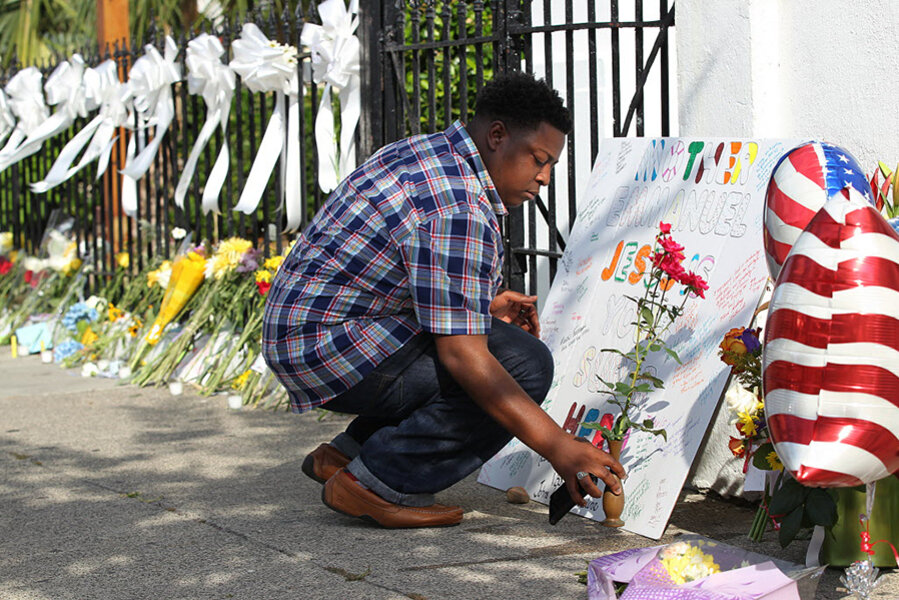More delays in Dylann Roof trial: What's holding it up?
Loading...
On Wednesday, a South Carolina judge delayed the trial of Dylann Roof, the white man charged with killing nine black parishioners at a church in Charleston, S.C., last year.
Over the objection of prosecutors, Circuit Judge J.C. Nicholson said the trial will begin on Jan. 17, 2017, with jury selection scheduled for December.
The delay had been long sought by lawyers for Mr. Roof, who told the judge that a doctor in their case said he needed an additional two to six months to examine Roof. He previously pleaded not guilty to murder and hate crime charges.
Prosecutors are seeking the death penalty for Roof, who has been charged with nine counts of murder and three counts of attempted murder.
The church massacre "was the ultimate crime, and justice from our state calls for the ultimate punishment," Ninth Circuit Solicitor Scarlett Wilson said last fall.
But several family members of the people killed in the shooting at Charleston's historic Emmanuel AME Church have opposed the death penalty, though others say they are awaiting the Justice Department’s decision whether to seek the death penalty in a separate federal case.
In South Carolina’s history, the case may be unusual in several ways, says Robert Dunham, executive director of the Death Penalty Information Center.
"The case is full of historical contradictions because of the long discriminatory use of the death penalty against African-Americans in South Carolina and the historically racist application of the death penalty," he told The Christian Science Monitor by phone.
"That leaves open the question as to whether pursuing the death penalty in this case is seen as validating a historically discriminatory institution or as a step away from its historically discriminatory use, and it may well be this is both."
A 2011 study found racial discrepancies in how South Carolina prosecutors seek death penalty charges that can particularly vary depending on the victim’s race.
The study, published in the South Carolina Law Review, found that between 1993 and 1998, prosecutors were 5.8 times more likely to seek the death penalty against people suspected of killing white victims than people suspected of killing black victims. This phenomenon is known as "victim discounting."
Prosecutors sought the death penalty in 2.6 percent of cases where the defendant was white and the victim was black, the study found. South Carolina last executed an inmate in 2011, according to the state's Corrections Department.
In the federal case Roof is facing 33 charges, include hate crimes offenses and religious freedom violations that make him eligible to face the death penalty. The case has been delayed twice this year as the Department of Justice reviews whether to seek a death sentence, a move that has frustrated the federal judge overseeing the case.
"We are getting to a point where we need to make a decision," US District Judge Richard Gergel said last week as he approved a fourth continuance in the trial. "Our patience is running out. There are victims here. They have a right to put this behind them." Such a decision typically takes 90 days, the Post and Courier reports.
After the shooting at Charleston's historic Emanuel AME Church in July, law enforcement investigators said they found a racist manifesto that Roof had posted on his website containing racial stereotypes and angry rants against black, Jewish, and Hispanic people.
In the unsigned manifesto, Roof describes what appears to be his intent to commit racial violence, writing, "Well someone has to have the bravery to take it to the real world, and I guess that has to be me."
Lawyers for Roof in the federal case have said that he intends to plead guilty to the federal hate crime charges, but they are waiting for the outcome of the Justice Department’s decision on the death penalty.
Mr. Dunham argues a lengthy appeals process that would result from a possible death sentence could also force victims' families to relive the crime repeatedly.
"What's clear is that the only reason this case is still in the courts is because death is still on the table," he says. "Roof has indicated that he is willing to plead guilty and – [except] for the death penalty – this would be over and done with as a legal matter. The healing could proceed."







